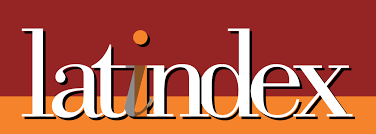E. T. A. Hoffmann, the magician of the sinister on the second centenary of his death
DOI:
https://doi.org/10.22201/dgpyfe.18704905e.2023.1.1.130Keywords:
Hoffman, literature, xix centuryAbstract
It's not hard to imagine Ernst Theodor Amadeus Hoffmann (1776-1822) as one of the outlandish creatures that inhabit his stories. It is enough to look at the caricatures that he made throughout his life to observe that, as in his writing, reality undergoes a process of distortion and estrangement. The people of his time identified well-known people in these crazy and ridiculous characters, which earned him the animosity of more than one politician, as well as the places where his stories took place that, despite their familiarity, were somehow and at the same time they were not the same ones that his readers knew. Max Milner, in his study The Phantasmagoria (1982), is right to link Hoffmann's literature with the 19th century shows centered on illusions and optical games. One can imagine the encounter with these powerful images as the first time facing the distorting mirror at a fair, which returns an elongated or squat reflection. Precisely that feeling of astonishment and strangeness is at the center of the artistic work of this author. Take into account that the people of that time, like the contemporary ones, were willing to pay a few coins to enjoy the special effects and be abstracted for a few moments from the real world. Thus, it was about letting oneself be carried away by the powers of the imagination, at a time in history when rationalism promised to find an answer to the mysteries of the universe and, consequently, the world was undergoing a process of "disenchantment", as Max Weber calls it.
References
Altamirano, Ignacio Manuel. Obras completas XII. Escritos de literatura y arte. Tomo I. México: Secretaría de Educación Pública, 1988.
Gutiérrez Nájera, Manuel. La música y el instante. Crónicas. Selección y prólogo de 3. 3. Oscar Rodríguez Ortiz. Caracas: Biblioteca Ayacucho, 2003.
La Iberia, 30 de julio al 4 de agosto de 1868.
Downloads
Published
How to Cite
Issue
Section
License

This work is licensed under a Creative Commons Attribution-NonCommercial-NoDerivatives 4.0 International License.
-
Attribution — You must give appropriate credit, provide a link to the license, and indicate if changes were made. You may do so in any reasonable manner, but not in any way that suggests the licensor endorses you or your use.
-
NonCommercial — You may not use the material for commercial purposes.
-
NoDerivatives — If you remix, transform, or build upon the material, you may not distribute the modified material.





